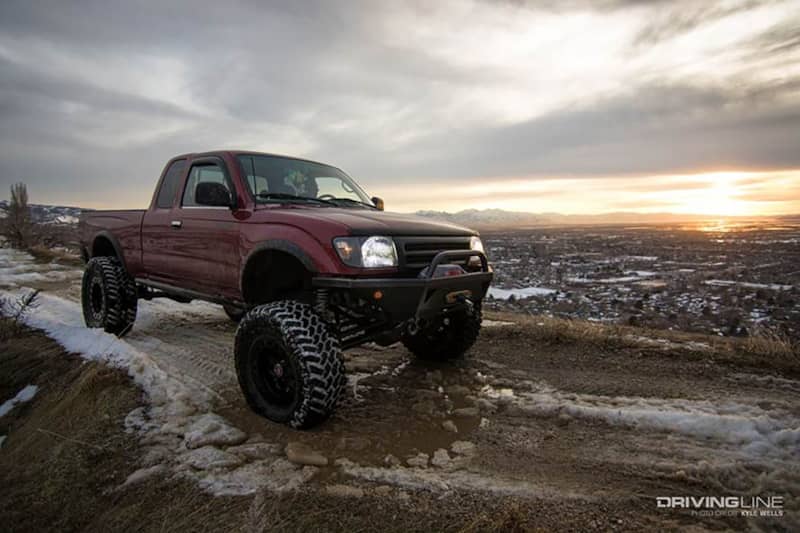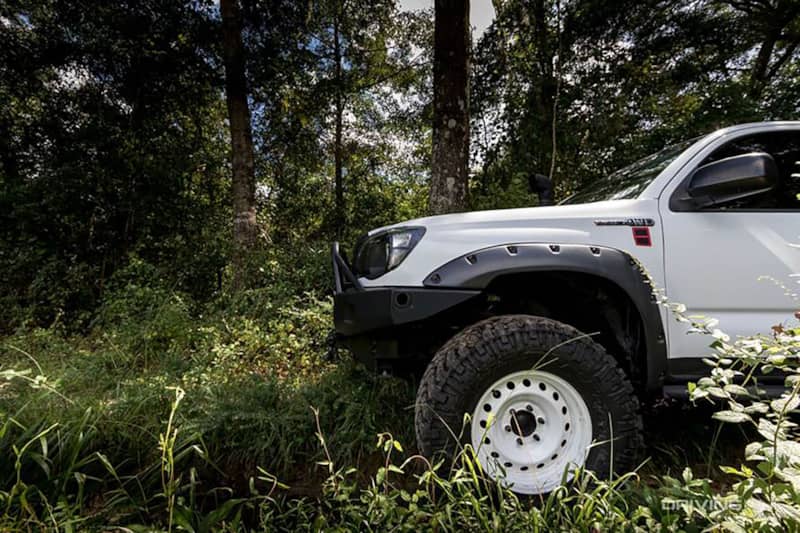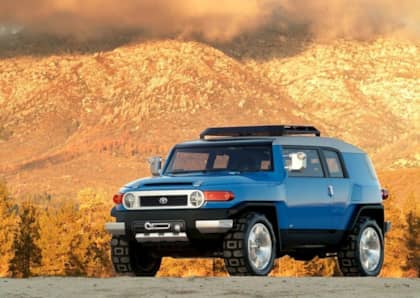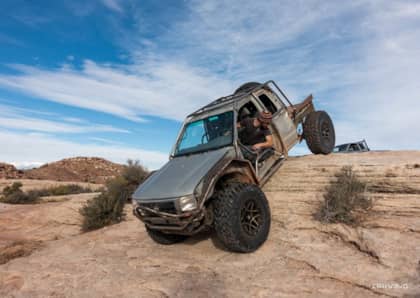25 Years of Tacoma: The Origins & Evolution of Toyota's Iconic Pickup Truck
Today the Toyota Tacoma is one the most popular pickup truck nameplates in North America and despite the fact that it comes from a Japanese company, the Tacoma is about as distinctly American as anything built by the big three. Now, 25 years since its introduction we look back on the beginnings and evolution of Toyota's popular pickup truck.
Toyota first started importing pickup trucks to the United States in the 1960s with a truck called the Stout. Sold in low numbers, the medium-sized Stout was replaced in the late 1960s with the smaller and much more popular Hilux, which would come to be known simply as the “Toyota Pickup” in the US.
For the rest of the 1970s, ‘80s and into the ‘90s the US market continued to get a Toyota Pickup that was very similar to the one sold across the world. Then in 1995 the Tacoma was introduced as a replacement for the Hilux in the North American Market and it marked the beginning of a new era for the brand.
1995: More Than Just a Pickup
With a growing North American truck market, the Tacoma was designed more toward people who drive a pickup every day as opposed to those who just use them for work.

While still considered a compact truck, the 1995 Tacoma was designed to be more suited to American buyers.

It would was more comfortable for drivers and passengers, had better ride quality and was safer—all while delivering the same capability and reliability that had won over so many loyal North American buyers in the previous decades.

During its first generation, the Tacoma was available in standard, extended and double cab configurations with the three different engine options. Base model trucks had a 2.4L four-cylinder engine with a larger 2.7L four-cylinder also available. Top of the line models offered a 3.4 liter V6 that made 190hp.

Transmission options for the first generation Tacoma were a five-speed manual or a four-speed automatic, and of course four-wheel-drive was a popular option. Over the course of its production run, the Tacoma included a few different models aimed at enthusiast and weekend off-roaders, including a Pre-Runner model which featured 4x4 suspension on a 2WD pickup and a TRD Off-Road package that was launched in 1998 and featured a locking rear differential.

Rarest of all was a street-oriented, 2WD Tacoma called the S-Runner that was produced in limited numbers. It featured the 3.4 liter V6, a five-speed manual, Tokico suspension and some more aggressive body touches.

More than just a cheap minitruck, the debut of the Tacoma expanded Toyota's pickup market to include everyone from workers and off-road hobbyists to those who wanted a dependable truck to carry their family. But the biggest changes were yet to come.
Second Gen: A "Minitruck" No More
By 2004, the pickup market had continued to grow with trucks from all the big automakers growing in size.

And while Toyota now sold a full-size pickup in the form of the Tundra, the Tacoma still grew in size significantly for its second generation.

Substantially longer and wider than the previous generation, the 2005 Tacoma was now considered a mid-size truck and its engine options became more powerful to accommodate this. Entry level models had a 2.7 liter four-cylinder that made 159 horsepower, while the V6 grew to 4.0 liters and now made 236 hp and 266 pound/feet of torque.

Once again it was offered with a variety of bed and cab lengths, with the four-door Double Cab model becoming increasingly popular as more and more pickup buyers began to use their trucks for family and passenger hauling in addition to typical "truck stuff."

In terms of styling, the second gen Tacoma wasn't just larger but it also featured a much more aggressive front grille design along with prominent flaring in the front and rear fenders. Some models had a larger foglights and even hood scoops for added personality.

Continuing on with the tradition established by the first gen model, Toyota continued to offer more capable TRD versions of the Tacoma including the TRD Sport and Off-Road packages, as well as limited production models like the Baja and the TRD Pro.

Most unique was the Tacoma X-Runner which was offered from 2005 to 2008. Like the S-Runner before it, the X-Runner was a street performance truck that featured unique suspension tuning, special wheels and tires and more aggressive bodywork.

All X-Runners were 2WD and featured the 4.0 liter V6 mated to a five-speed manual transmission, and their unique blend of practicality and performance along with low production numbers, the X-Runner has proved to be quite hot on the used market.
Third Gen: Making a Good Thing Better
After more than a decade of production, the new, third generation Tacoma hit the market in 2015 as a 2016 model year vehicle.

At a glance, the 2016+ trucks don't look much different from the previous generation, but with the launch of third gen Toyota gave the Tacoma a full re-working. The frame is both lighter and stronger than before, and just about all of the mechanical bits were upgraded.

A regular cab model was no longer offered, and the V6 engine is now a 3.5 liter 2GR that makes 278hp and 266 pound feet of torque, and both the automatic and manual transmissions are six-speeds.

Toyota continued with TRD Sport and TRD Off-Road packages, while the limited production Tacoma TRD Pro has proven to be extremely popular with its Fox suspension, added skid plates and other unique parts, including limited availability body colors.

Overall the Tacoma has stuck with a fairly old school and dependable approach to the segment, taking the established platform and adding modern conveniences and features to appeal to contemporary buyers. Naturally, a thriving aftermarket has grown to meet the needs of an ever-growing Tacoma enthusiast community.

Amazingly enough, even as the Tacoma has aged and its competitors evolved the Toyota's popularity has only grown, with sales figures rising with each year for the past decade, and nearly 250,000 units sold in the US during 2019.

So while have some have been wondering if and when the Tacoma will get a full redesign, the truck is by no-means struggling. Rumor has it that both the next gen Tacoma and the next gen version of the full size Tundra will be built off the same platform.
Needless to say, Toyota will be very strategic with the next generation Tacoma because over the last 25 years Toyota's "small" pickup has only made for bigger shoes to fill.
And to get an idea of just how much the aftermarket has embraced the Tacoma, check out this feature on a fully outfitted 2017 4x4 Sport model.











